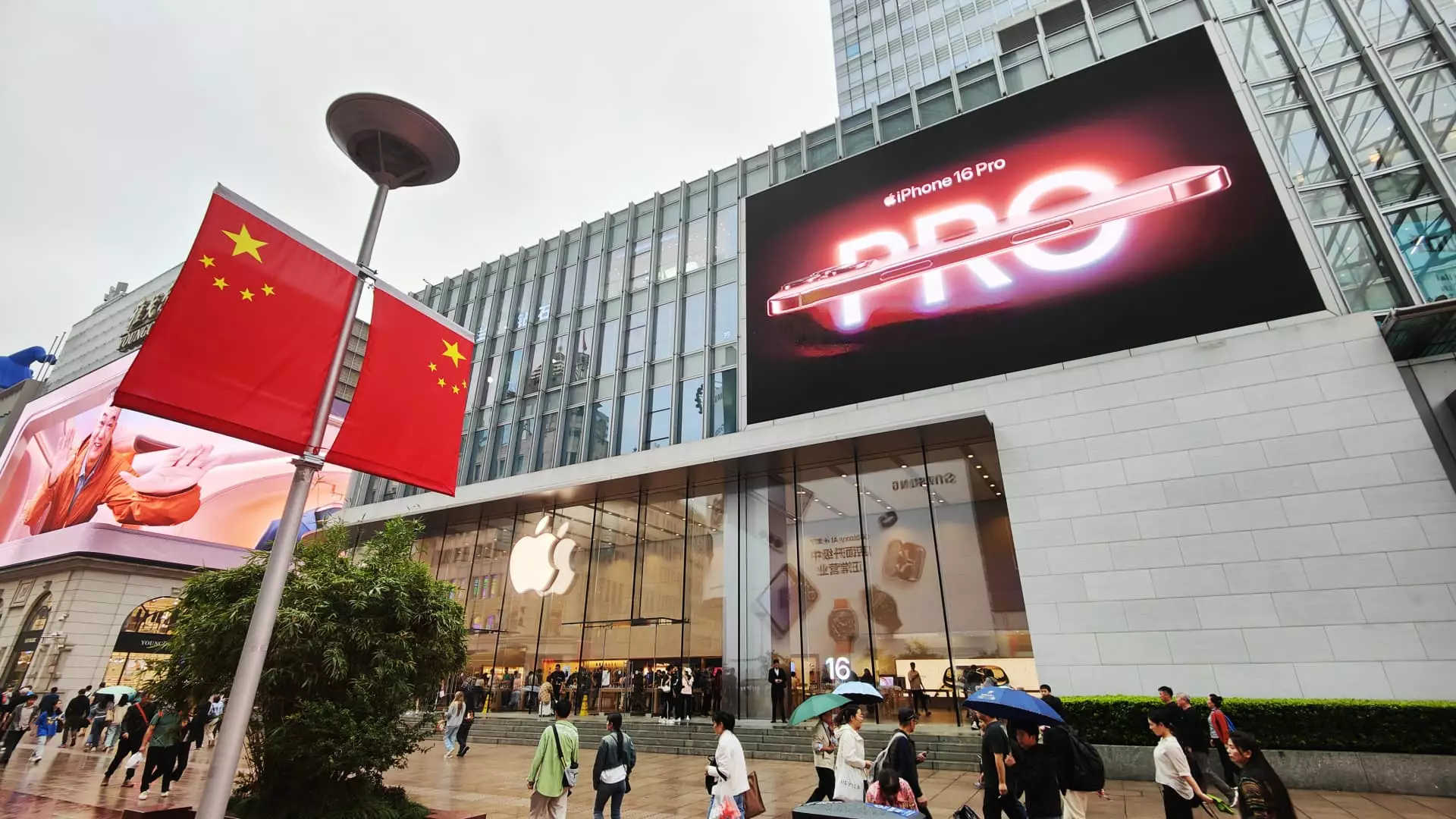Recent data has revealed a significant downturn in the sales of foreign smartphone brands in China, particularly affecting industry leader Apple. In November alone, shipments of foreign mobile phones fell to approximately 3.04 million units—a staggering decrease of nearly 47.4% compared to the same month the previous year, and a sharp 51% decline from October 2023. This trend not only highlights Apple’s struggles in a competitive landscape dominated by domestic brands but also raises critical questions about the sustainability of foreign brands in one of the world’s largest smartphone markets.
As the leading international brand, Apple traditionally held a robust share of the Chinese smartphone market. However, the latest statistics reveal a narrative of decline amidst intensifying competition from local companies. Although detailed figures for each foreign brand are not disclosed, it is understood that Apple contributes a significant portion of these shipments. With domestic competitors like Huawei recovering strongly from U.S. sanctions, Apple finds itself in a precarious position where earlier advantages are quickly eroding.
Huawei, in particular, has made a notable comeback, launching a series of high-end smartphones that have been met with enthusiasm from Chinese consumers. The resurgence of Huawei’s popularity has outstrip Apple’s own growth, as indicated by IDC’s recent assessments. This shift in consumer preference underscores a critical juncture for Apple, highlighting the urgency of adapting its strategies to retain market share in this highly competitive environment.
In an effort to recapture momentum, Apple unveiled its iPhone 16 series, promising an array of new artificial intelligence features that are part of the Apple Intelligence software. Unfortunately for Apple, these advancements are hindered by regulatory complexities in China that prevent the release of such features within the country. Meanwhile, domestic brands are capitalizing on this opportunity by promoting their available AI functionalities, connecting with consumers’ growing interest in these technologies.
Apple’s commitment to the Chinese market is evident from the multiple visits made by CEO Tim Cook to foster partnerships and ensure that Apple’s innovations align with local preferences. However, without the timely introduction of its advanced software functionalities, Apple risks falling further behind its competitors that are already capturing consumer attention with their own AI capabilities.
As the Chinese New Year approaches, Apple is moving to entice consumers with discounts on the iPhone 16, recognizing the importance of seasonal promotions in stimulating sales. This strategy reflects a broader attempt to reinvigorate interest in its flagship products amidst a challenging landscape. While such initiatives may provide a temporary boost, Apple must also consider long-term strategies to establish a more resilient position in the market.
The situation facing foreign smartphone brands, especially Apple, in China is precarious. With intense competition, regulatory hurdles, and shifting consumer loyalties, Apple’s path forward will require innovative thinking and agility. The outcomes of these tactical moves will be crucial not only for Apple’s market standing in China but also for its global future amidst changing dynamics in the smartphone industry.

